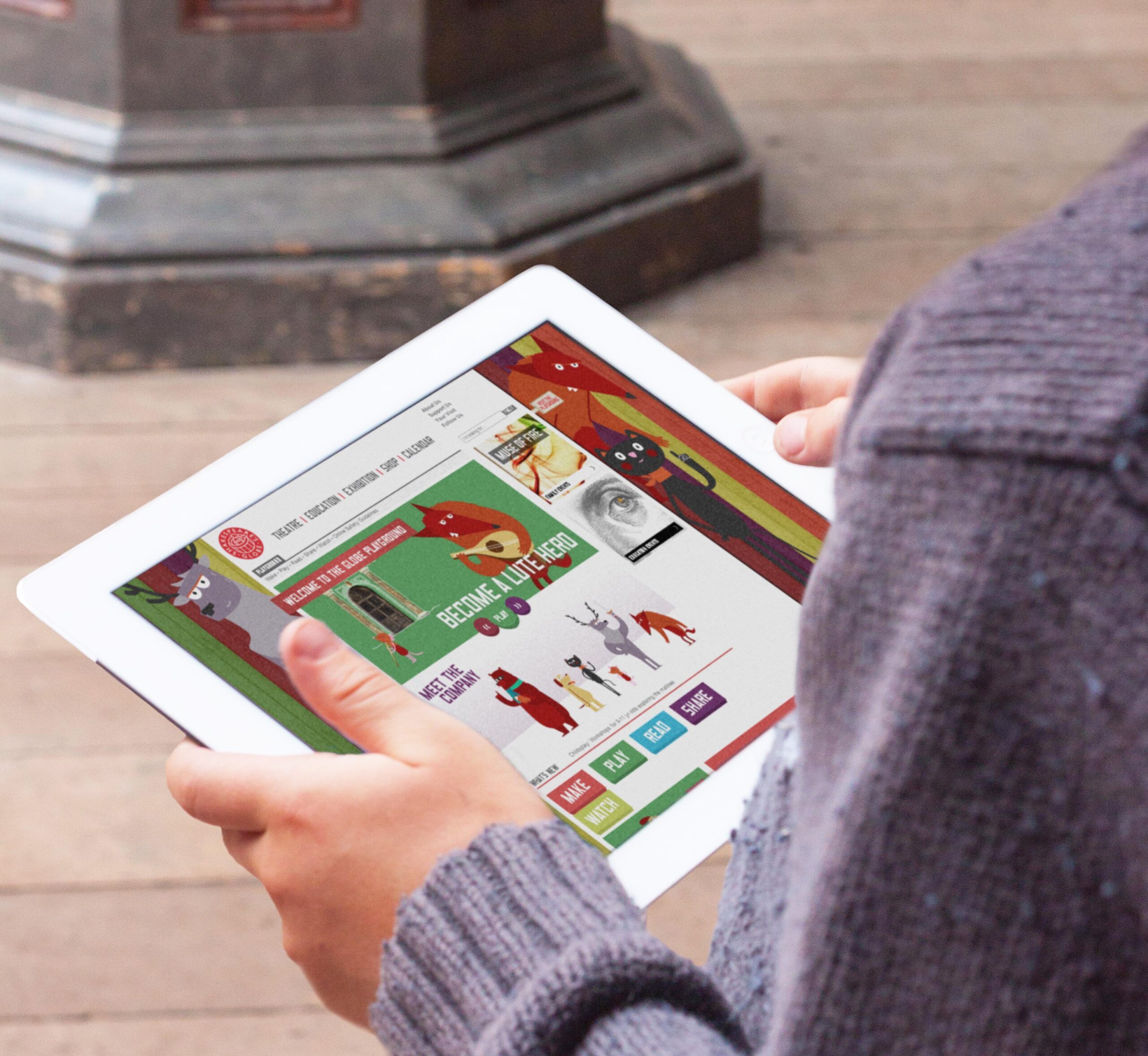
Playing with Shakespeare
Playful interaction is at the heart of all Globe Education’s digital activities for school-aged children, writes Patrick Spottiswoode.
Some of the most lively, active and imaginative teaching of Shakespeare in recent years has been taking place in primary school classrooms. The presence of the Tudors on the key stage two curriculum has been encouraging teachers to develop playful and accessible projects to introduce children to Shakespeare and the Globe Theatre. Over 50,000 primary school children have been visiting the Globe for Shakespeare workshops year on year. They are taken into the Globe at the end of their workshop to speak their lines from the stage. They leave buzzing with excitement.
We wanted to build on that excitement by creating web-based activities that 5 to 11 year olds could enjoy on their own or with families at home. Playful interaction was key. While our neighbour, the Tate, has created some wonderfully engaging web materials for its Tate Kids, no Shakespeare sites of a similar quality existed for the young.
This is a far cry from the inanimate unillustrated text that I had at school
Persistent Peril, a start-up digital animation company, came up with a concept and designs for an online Globe Playground. The Globe Playground has a resident theatre company, The Beasts of Shakespeare’s Globe, made up of animated animal characters that feature in Shakespeare’s plays. Named after actor or playwright contemporaries of Shakespeare, such as Hemmings the Bear and Dekker the Dog, they introduce children to a variety of interactive games and tasks grouped within five areas: 'Make', 'Read', 'Watch', 'Play' and 'Share'. In Share children are able to upload their own drawings and photographs for display in the online gallery. These pages have become the ‘stickiest’ on the Globe website.
We had been loath to publish yet another Shakespeare edition for key stage three. However, digital technology has helped us revolutionise school Shakespeare in collaboration with Hodder Education. Hodder’s Dynamic Learning, created for interactive whiteboards, animates a complete Shakespeare text with audio clips of actors and directors talking about their choices and film extracts of rehearsals and performances. The accompanying books are richly illustrated with photographs and supported by practical activities inspired by and taken from the rehearsal room.
The Globe Education Shakespeare editions have now been translated into iBooks. They smell of theatre and introduce students to the myriad meanings and choices open to productions. They are the way forward for school editions in the twenty-first century. The editions have drawn on both Globe Theatre season productions and Globe Education’s own Playing Shakespeare with Deutsche Bank productions created every year for 13 to 15 year olds. 24,000 free tickets will be given to London school students in March next year alone for our full equity production of The Merchant of Venice.
Digital resources as well as workshops will support the production and, once again, there will be playful interactive drawings on social networking pages and ideas. This is a far cry from the inanimate unillustrated text that I had at school which might occasionally have been supported by a study guide or pack which was little more than a few facts and a deadly dull synopsis.
While we were developing The Globe Playground, the government announced changes to the primary curriculum: from autumn 2014 the Tudors will no longer be studied at key stage two. Thus many students will not now meet Shakespeare until key stage three, by which time a ‘Shakesfear’, as Ralph Cohen terms it, may have taken hold. All the more reason that digital initiatives, such as The Globe Playground or iBook editions, should be developed to animate students’ enjoyment and understanding of Shakespeare.
Patrick Spottiswoode is Director of Globe Education.
www.shakespearesglobe.com/playground

Join the Discussion
You must be logged in to post a comment.